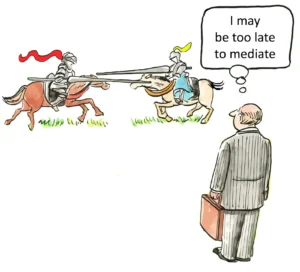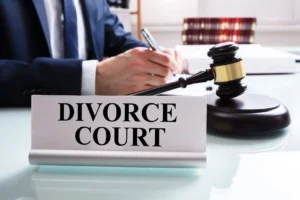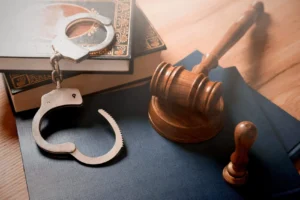Alibi Defense Strategies: Proving You Were Elsewhere During Crime
The alibi defense stands as one of the most powerful and straightforward legal strategies available to defendants in criminal cases. At its core, this defense asserts a fundamental claim: the accused could not have committed the alleged crime because they were physically elsewhere when it occurred. Unlike more complex legal defenses that require nuanced interpretations of law or intent, the alibi defense addresses the basic question of physical possibility. If a defendant can conclusively establish their presence at a different location during the commission of a crime, logic dictates they could not have perpetrated it. This defense strategy, while conceptually simple, demands meticulous preparation and compelling evidence to succeed in today’s sophisticated legal environment.
In the American criminal justice system, where the prosecution bears the burden of proving guilt beyond a reasonable doubt, a well-established alibi can create precisely the reasonable doubt necessary for acquittal. The alibi defense does not require defendants to prove their innocence affirmatively; rather, it challenges a fundamental element of the prosecution’s case—the defendant’s physical presence at the crime scene. When effectively presented, this defense compels jurors to confront a straightforward logical impossibility: a person cannot be in two places simultaneously. However, the practical implementation of this defense involves far more than a mere claim of absence. It requires substantial corroborating evidence, strategic presentation, and careful navigation of procedural requirements.
The Legal Foundation of Alibi Defenses
The alibi defense is deeply rooted in our legal tradition, reflecting the fundamental principle that criminal liability requires personal agency. Under criminal law, an alibi defense strategy involves providing evidence that the defendant could not have committed the crime because they were somewhere else when it occurred. This straightforward concept carries significant legal weight, as it directly challenges the prosecution’s ability to place the defendant at the crime scene—an essential element in most criminal cases.
Courts across jurisdictions recognize an alibi as a valid defense strategy. For instance, California Criminal Jury Instructions 3400 defines an alibi simply as a contention by the defendant that they were not present when the crime occurred, thereby casting reasonable doubt on their culpability. The defense requires establishing three essential elements: the defendant was not present at the time or place of the crime, had no reasonable opportunity to commit the offense, and could not have committed the crime through other means. This framework provides clarity for both the defense in presenting evidence and the jury in evaluating its significance.
Unlike affirmative defenses such as self-defense or insanity, which require the defendant to bear some burden of proof, the alibi defense does not shift the fundamental burden from the prosecution. Even when a defendant raises an alibi, the prosecution must still prove beyond a reasonable doubt that the defendant committed the crime. The alibi simply provides evidence that challenges the prosecution’s ability to meet this burden. This distinction is crucial for understanding how alibi defenses function within our adversarial system of justice.
Procedural Requirements for Raising an Alibi
Most jurisdictions impose specific procedural requirements on defendants who intend to present an alibi defense. These requirements typically include providing the prosecutor with written notice of the intended alibi defense before trial, usually during the discovery phase. This advance notification serves several purposes, including allowing the prosecution sufficient time to investigate the alibi claim and preventing unfair surprise at trial.
The defendant’s written notice generally must provide details of their alibi, including their claimed location during the crime and the evidence they intend to present in support. This disclosure typically includes identifying potential alibi witnesses and outlining the substance of their expected testimony. Failure to comply with these notification requirements can result in the court barring the defendant from presenting alibi evidence at trial, potentially eliminating a crucial defense strategy. These strict procedural rules underscore the importance of early and thorough preparation when considering an alibi defense.
While these requirements may seem burdensome for the defense, they reflect the justice system’s commitment to truth-seeking rather than tactical advantage. By requiring advance disclosure of alibi claims, the rules allow for thorough investigation of all evidence, ultimately serving the interests of justice. Defendants and their counsel must therefore be vigilant about meeting these procedural obligations to preserve their ability to present a potentially exonerating defense.
Types of Evidence Supporting an Alibi Defense
Effective alibi evidence comes in various forms, each with distinct strengths and potential challenges. Witness testimony remains among the most common forms of alibi evidence. Individuals who can testify to the defendant’s presence elsewhere during the crime provide direct evidence contradicting the prosecution’s timeline. The credibility of these witnesses is paramount, with those having no personal connection to the defendant often carrying greater weight with juries than family members or close friends, who might be perceived as biased.
Physical evidence can provide compelling support for an alibi claim. This category includes items such as credit or debit card receipts, transportation tickets, time-stamped photographs, and security logs from buildings requiring identification for entry. Such evidence offers objective verification of a person’s whereabouts that can be difficult for prosecutors to refute. For example, a credit card receipt showing a purchase at a location miles from the crime scene, with a timestamp corresponding to the time of the offense, presents powerful exculpatory evidence.
In our increasingly digital world, electronic alibi proof has become increasingly significant. Cell phone location data, GPS records from vehicles or fitness trackers, email or text message timestamps, social media posts with location tags, and video call records can all establish a defendant’s location with remarkable precision. This digital footprint creates what some legal experts term an “electronic alibi“—a technologically verified account of a person’s whereabouts that can be difficult to dispute. However, the technical nature of such evidence often requires expert testimony to authenticate and explain its significance to the jury.
The Role of Surveillance Footage in Modern Alibi Cases
Perhaps no technological development has transformed alibi verification more profoundly than the proliferation of surveillance systems. In today’s environment, where cameras monitor public spaces, businesses, transportation hubs, and even residential areas, video footage can provide irrefutable evidence of a person’s location. Time-stamped surveillance recordings showing a defendant at a location distant from the crime scene during its commission represent some of the most compelling alibi evidence possible.
The evidentiary value of surveillance footage lies in its objective, unbiased nature. Unlike human witnesses, cameras do not have relationships with defendants, personal biases, or memory limitations. When properly authenticated, surveillance footage provides jurors with direct visual evidence of a defendant’s whereabouts, often complete with precise time markers. This concrete evidence frequently proves more persuasive than testimony alone, particularly when the footage clearly identifies the defendant and establishes the relevant timeframe.
However, surveillance evidence presents its own challenges. Defense attorneys must act quickly to preserve footage before routine deletion occurs, often requiring prompt subpoenas or preservation letters to businesses or institutions. Additionally, the quality of recordings varies dramatically, sometimes requiring enhancement or expert analysis to identify individuals conclusively. Despite these challenges, video surveillance has revolutionized alibi defenses, providing an unprecedented level of objective verification that was simply unavailable in previous eras.
Digital Alibis: Cell Phone and GPS Evidence
The ubiquity of mobile devices has created new opportunities for establishing alibis through digital alibi proof. Cell phones connect to towers as users move through different areas, creating records of approximate location that can be retrieved through proper legal channels. More precise still, smartphones with location services enabled generate detailed GPS data documenting a user’s movements. These digital breadcrumbs can place a defendant miles from a crime scene at the critical time, potentially exonerating them entirely.
Social media platforms and applications that automatically tag locations or timestamps can similarly support alibi claims. A Facebook check-in, an Instagram post with location data, or a Snapchat with a geofilter can all establish a person’s whereabouts at a specific time. Even routine digital activities like email correspondence, online purchases, or streaming service usage generate metadata that can help establish location and timing. This passive digital documentation often proves more reliable than active claims, as it creates records without the defendant’s conscious effort to establish an alibi.
The technical complexity of digital evidence typically requires expert testimony to authenticate and explain its significance. Digital forensics experts can extract and analyze data from devices, interpret cell tower records, and explain the reliability of various location-tracking technologies. While prosecutors may challenge the precision of such evidence or suggest the possibility of someone else using the defendant’s device, properly authenticated digital records can provide compelling support for alibi claims in an era where our devices constantly document our movements.
The Credibility Factor: Strengthening Witness Testimony
When an alibi defense relies on witness testimony, the credibility of those witnesses becomes a central factor in its effectiveness. Juries naturally scrutinize alibi witnesses carefully, particularly those with close relationships to the defendant. Family members, romantic partners, and close friends face heightened skepticism due to their perceived motivation to protect the defendant. This reality requires careful preparation to enhance witness credibility through specific, detailed testimony that withstands cross-examination.
Credible alibi witnesses typically provide detailed accounts that include specific activities, conversations, or observations that anchor their memory of being with the defendant. These concrete details make testimony more believable than vague recollections. Additionally, witnesses who can explain why they remember the specific date and time—perhaps due to a special event, unusual circumstance, or documentation that refreshed their memory—generally appear more reliable than those who cannot account for their precise recall of routine days.
Independent corroboration significantly enhances witness credibility. When multiple witnesses provide consistent accounts, or when testimony aligns with objective evidence like receipts or photographs, the alibi gains strength. Similarly, witnesses without obvious bias or motivation to lie for the defendant—such as store clerks, workplace colleagues, or casual acquaintances—often carry greater weight with juries. The defense attorney’s task involves not only finding witnesses who can place the defendant elsewhere but ensuring those witnesses can convey their knowledge convincingly and withstand rigorous cross-examination.
Challenging Prosecution Timeline and Evidence
A successful alibi defense often requires more than simply placing the defendant elsewhere; it necessitates precisely aligning the alibi with the prosecution’s timeline of the crime. Defense attorneys must therefore carefully analyze the prosecution’s evidence regarding when the crime occurred and ensure their alibi evidence specifically addresses that timeframe. This precision becomes particularly important when the exact timing of the crime remains somewhat flexible or when the prosecution’s timeline contains ambiguities.
Effective defense strategies include challenging the prosecution’s timeline itself when appropriate. Witness testimony about when events occurred can be notoriously unreliable, and even surveillance evidence may have timestamp inaccuracies. By highlighting uncertainties or inconsistencies in the prosecution’s temporal framework, defense attorneys can create additional room for their alibi evidence to operate. This approach requires meticulous attention to details in police reports, witness statements, and forensic evidence regarding timing.
The defense must also anticipate and address potential prosecution theories that might accommodate both the alibi evidence and the defendant’s guilt. For instance, prosecutors might suggest the defendant committed the crime and then quickly traveled to establish an alibi, had an accomplice commit the crime while they were elsewhere, or that witnesses are mistaken about the specific date or time they observed the defendant. Comprehensive alibi defenses address these alternative explanations proactively, demonstrating not just that the defendant was elsewhere, but that they had no reasonable opportunity to commit the crime by any means.
Preparing for Cross-Examination of Alibi Evidence
Prosecutors typically subject alibi evidence to rigorous scrutiny, employing several common strategies to undermine its credibility. They frequently highlight any delay in presenting the alibi, suggesting that legitimate alibis would be raised immediately upon accusation rather than developed later as a defense strategy. They also scrutinize relationships between the defendant and alibi witnesses, emphasizing potential motivations to fabricate testimony. Additionally, prosecutors often focus on inconsistencies between different witnesses’ accounts or between testimony and documentary evidence.
Effective preparation for these challenges begins with thorough investigation and documentation of the alibi from the earliest stages of representation. Defense attorneys should interview potential witnesses separately to identify any inconsistencies before trial, address memory gaps, and develop strategies to explain discrepancies that might emerge. Witnesses should be prepared for cross-examination without being coached on specific answers, understanding the types of questions prosecutors typically ask and the importance of acknowledging limitations in their recollection rather than overreaching.
Documentary and digital evidence supporting the alibi should undergo careful authentication and verification before trial. This process includes confirming the accuracy of timestamps, establishing chain of custody for physical evidence, and addressing potential technical limitations of digital records. By anticipating and addressing potential weaknesses proactively, defense attorneys can present alibi evidence in a manner that withstands prosecutorial challenges and maintains credibility with the jury throughout the trial.
The Impact of Alibi Timing and Disclosure
The timing of an alibi’s disclosure can significantly impact its perceived credibility. Alibis presented immediately upon arrest or during initial police questioning generally appear more credible than those raised later in the proceedings. This perception stems from the logical assumption that an innocent person would promptly assert their absence from the crime scene rather than developing an alibi as a strategic defense. However, legitimate factors often explain delayed disclosure, including confusion about the exact time of the crime, failure to immediately recognize the significance of one’s whereabouts, or lack of legal representation during initial questioning.
Research on alibi believability reveals interesting patterns regarding timing and disclosure. Studies indicate that alibis that change over time face particular skepticism, though the nature of the change matters significantly. Alibis that evolve from vague to more specific as additional evidence emerges may retain credibility, while those that fundamentally change locations or activities appear suspicious. Interestingly, research suggests that when alibis are presented a second time after initial disclosure, salacious alibis (those involving embarrassing or illicit activities) may actually gain credibility compared to neutral alibis.
Defense attorneys must carefully manage the disclosure process, balancing the benefits of early presentation against the risks of presenting incomplete information that might later require correction. When circumstances necessitate modifying an alibi based on new information or evidence, attorneys should transparently explain the reasons for the change rather than appearing to adapt the defense opportunistically. This approach acknowledges the natural evolution of recollection and evidence gathering while maintaining the core credibility of the alibi claim.
The Curious Case of Salacious Alibis
Research on alibi believability has revealed a fascinating phenomenon regarding what some researchers term “salacious alibis”—those involving embarrassing, illicit, or morally questionable activities. These might include being with a mistress during the crime, engaging in illegal but non-violent activities like drug use, or participating in other behavior the defendant might be reluctant to disclose. The research findings on such alibis present complex and sometimes contradictory patterns regarding their effectiveness.
Some studies suggest that salacious alibis may actually enhance credibility in certain contexts, operating on the logical premise that a defendant would not fabricate an alibi that damages their character or admits to other misconduct unless it were true. For instance, research by Allison et al. found that defendants claiming to have been watching pornography at the time of an alleged robbery received higher alibi believability ratings than those claiming to watch a regular movie. This counterintuitive finding suggests jurors may apply a “why would they lie about that?” heuristic to embarrassing alibis.
However, other research indicates that illegal or morally questionable alibis can damage perceptions of the defendant’s character, potentially influencing overall case outcomes even while the alibi itself might be believed. Studies by Jung et al. and Keeping et al. found that defendants with salacious alibis were viewed more negatively on character trait measures than those with neutral alibis. This complex dynamic requires careful strategic consideration, balancing the potential credibility enhancement of a salacious alibi against the character damage it might inflict, particularly in cases where juror perceptions of the defendant’s moral character could influence their verdict.
Technological Advancements and Alibi Verification
Emerging technologies continue to expand the possibilities for alibi verification in criminal cases. Biometric data from smartwatches and fitness trackers can provide detailed records of a person’s location, movement patterns, and even physiological state throughout the day. These devices generate continuous data streams that can place individuals with remarkable precision, often accurate to within a few meters when GPS functionality is enabled. As these technologies become increasingly widespread, they create potential alibi evidence that individuals generate passively during their daily activities.
Home automation systems, smart speakers, and internet-connected devices create additional digital footprints that may support alibi claims. These systems often log user interactions with timestamps and sometimes location data, creating records of a person’s presence in their home or interaction with connected devices. Similarly, automated toll collection systems, transit cards, and building access controls generate time-stamped records of an individual’s movements that can prove valuable in establishing alibis.
The forensic use of these technologies requires specialized expertise to extract, authenticate, and interpret the data. Digital forensics experts must address questions about the reliability of the systems, the possibility of manipulation, and the precise conclusions that can be drawn from the available data. As these technologies evolve, courts continue to develop standards for their admissibility and weight as evidence, creating a dynamic area of practice for criminal defense attorneys utilizing technological alibis.
Alibi Defense Challenges in Different Case Types
The effectiveness of alibi defenses varies significantly across different categories of criminal cases, each presenting unique challenges. In cases involving discrete events with precise timing—such as robberies, assaults, or homicides occurring at specific moments—alibis can prove particularly powerful. When the prosecution must establish the defendant’s presence at an exact time and place, evidence placing them elsewhere directly contradicts an essential element of the case. These scenarios represent the classic application of alibi defenses, where the logical impossibility of being in two places simultaneously creates reasonable doubt.
More challenging are cases involving crimes alleged to have occurred across extended timeframes or on uncertain dates. Sexual assault allegations, particularly those reported after significant delays, may involve uncertain timing that makes alibi evidence difficult to align precisely with the alleged offense. Similarly, financial crimes or conspiracy charges often involve conduct spanning weeks or months, potentially limiting the effectiveness of alibis covering specific moments. In these cases, defense attorneys must carefully analyze the prosecution’s timeline allegations and focus alibi evidence on critical periods when the defendant’s personal participation was allegedly required.
Cases involving accomplice liability or other forms of vicarious criminal responsibility present additional complications. Even when a defendant can establish their absence from the immediate crime scene, prosecutors may argue they participated in planning, provided assistance beforehand, or otherwise contributed to the criminal enterprise while physically elsewhere. Comprehensive alibi defenses in such cases must address not only the defendant’s location during the crime itself but also during relevant planning periods or other times when their participation might be alleged.
The Role of Expert Witnesses in Supporting Alibis
Complex alibi defenses increasingly rely on expert testimony to authenticate, explain, and contextualize technical evidence. Cell phone experts can analyze tower connection data to establish a device’s approximate location throughout a relevant timeframe, explaining both the capabilities and limitations of such evidence to the jury. These experts address crucial questions about the precision of location data, the possibility of a phone being used by someone other than its owner, and the technical reliability of the records presented.
Digital forensics specialists perform similar functions for computer-based alibis, analyzing metadata from emails, social media posts, or other digital activities to verify when and where they occurred. These experts can authenticate digital photographs or videos, examine embedded timestamp and location data, and address concerns about potential manipulation or alteration. Their testimony translates complex technical information into understandable evidence that jurors can evaluate effectively.
In some cases, experts in human memory and perception may assist with alibi defenses based primarily on witness testimony. These specialists can educate jurors about factors affecting memory reliability, explaining why witnesses might have clear recollections of being with the defendant despite significant time passage or why minor inconsistencies in testimony need not undermine its core reliability. By providing scientific context for evaluating witness credibility, these experts help jurors assess alibi testimony through an informed lens rather than based on potentially inaccurate intuitions about how memory functions.
Case Studies: Successful and Failed Alibi Defenses
Examining real-world examples illustrates both the power and potential pitfalls of alibi defenses. One instructive case involved a defendant charged with armed robbery whose description and clothing matched eyewitness accounts. However, the defense established that he was at a movie theater miles away during the robbery, corroborated by credit card receipts, a ticket stub, and lobby surveillance footage showing his presence. This comprehensive, multi-layered alibi evidence led to acquittal despite the seemingly strong identification evidence against him.
Contrast this with cases where alibis failed despite initial plausibility. In one notable example, a defendant claimed to be at a family reunion during an alleged drive-by shooting involving a vehicle matching his car’s description. While multiple family members confirmed his presence at the picnic grounds, the prosecution successfully challenged the alibi by presenting evidence that the defendant had briefly left the gathering during the critical timeframe, creating sufficient opportunity to commit the offense. This case demonstrates the importance of establishing not just presence elsewhere but the impossibility of participation through any means.
The high-profile case of Adnan Syed, featured in the podcast “Serial,” illustrates the complex interplay between alibi evidence and other case factors. Despite a potential alibi witness (Asia McClain) who claimed she was with Syed at a library during the time of his ex-girlfriend’s murder, this evidence was never presented at his original trial. The case demonstrates how even potentially strong alibi evidence can be undermined by procedural issues, ineffective counsel, or competing prosecution narratives that suggest alternative timelines for the crime.
Strategic Considerations for Defense Attorneys
Defense attorneys contemplating an alibi defense must evaluate several strategic factors before committing to this approach. First, they must assess the strength and comprehensiveness of available alibi evidence, considering whether it conclusively places the defendant elsewhere throughout the entire period when the crime could have occurred. Partial or incomplete alibis that leave temporal gaps during which the defendant theoretically could have committed the offense may do more harm than good, potentially appearing as failed attempts at deception rather than exculpatory evidence.
Attorneys must also consider how the alibi evidence will interact with other defense strategies. In some cases, an alibi defense may complement claims of mistaken identification or challenges to physical evidence. In others, it might conflict with alternative defenses such as self-defense or lack of intent, which implicitly acknowledge the defendant’s presence at the scene. These potential contradictions require careful navigation to maintain a coherent and credible defense narrative throughout the proceedings.
The credibility of alibi evidence must be evaluated objectively, recognizing that juries typically approach alibi claims with some skepticism. Defense attorneys should candidly assess potential weaknesses, including relationships between the defendant and witnesses, any delay in presenting the alibi, and inconsistencies in the evidence. Strong alibis that can withstand prosecutorial scrutiny deserve aggressive presentation, while weaker alibis might better serve as supplementary evidence rather than the centerpiece of the defense strategy.
Prosecutorial Responses to Alibi Defenses
Prosecutors employ several common strategies when confronting alibi defenses. One frequent approach involves challenging procedural compliance, arguing that the defense failed to provide proper advance notice of the alibi as required by discovery rules. If successful, this technical challenge can prevent the presentation of alibi evidence entirely, regardless of its substantive merit. Defense attorneys must therefore scrupulously adhere to notification requirements to preserve this critical defense option.
When alibis survive procedural challenges, prosecutors typically attack their substantive credibility through rigorous cross-examination. This examination often focuses on relationships between the defendant and witnesses, prior inconsistent statements, the precision of temporal recollections, and any circumstances suggesting fabrication or collusion. Prosecutors may also present evidence directly contradicting the alibi, such as surveillance footage, witness testimony, or physical evidence placing the defendant at the crime scene during the relevant period.
In cases involving strong alibi evidence for the specific time of the crime, prosecutors sometimes respond by arguing for a different timeline than initially presented. By suggesting the crime occurred earlier or later than first alleged, they attempt to circumvent the alibi’s exculpatory effect. This strategy highlights the importance of establishing alibis that cover not just the prosecution’s initially claimed timeframe but any reasonable alternative period during which the crime might have occurred.
Ethical Considerations in Presenting Alibi Evidence
The presentation of alibi evidence raises significant ethical considerations for defense attorneys. While zealous advocacy requires pursuing all legitimate defense strategies, ethical and legal obligations prohibit presenting false testimony or fabricated evidence. Attorneys who knowingly present false alibi evidence face potential disciplinary action, including disbarment, as well as criminal charges for suborning perjury or obstructing justice. These severe consequences necessitate careful verification of alibi claims before presentation.
Defense attorneys must balance their duty to advocate for clients with their obligations as officers of the court. This balance requires thoroughly investigating alibi claims to assess their veracity, including interviewing witnesses separately, seeking corroborating evidence, and probing inconsistencies or implausibilities. When investigation raises substantial doubts about an alibi’s truthfulness, attorneys must have difficult conversations with clients about the risks and ethical constraints involved in presenting questionable evidence.
These ethical considerations extend to witness preparation. While attorneys may properly prepare witnesses by explaining courtroom procedures, reviewing their prior statements, and discussing likely areas of questioning, they cannot suggest specific testimony or coach witnesses to alter their accounts. Ethical preparation focuses on helping witnesses testify truthfully and effectively rather than influencing the substance of their testimony. This distinction, though sometimes subtle in practice, represents a crucial ethical boundary in alibi defense preparation.
Conclusion: The Future of Alibi Defenses in an Increasingly Digital World
As we advance further into the digital age, the nature and presentation of alibi defenses continue to evolve. The proliferation of location-tracking technologies, surveillance systems, and digital footprints creates unprecedented opportunities for establishing precise alibis without relying solely on potentially fallible human memory. These technological developments may strengthen the overall reliability of alibi evidence while simultaneously raising new questions about privacy, data security, and the technical complexity of digital forensics.
The increasing sophistication of alibi evidence demands corresponding evolution in legal frameworks governing its presentation and evaluation. Courts must develop standards for authenticating and weighing various forms of digital evidence, balancing considerations of reliability, potential for manipulation, and technical limitations. Similarly, rules regarding discovery and disclosure of alibi evidence may require adaptation to address the unique characteristics of digital alibis, which often involve complex technical data requiring specialized interpretation.
Despite these technological advancements, the fundamental principles underlying alibi defenses remain constant. The prosecution must prove the defendant’s guilt beyond a reasonable doubt, including establishing their presence at the crime scene. A well-established alibi that places the defendant elsewhere creates the reasonable doubt necessary for acquittal. By combining traditional forms of alibi evidence with emerging technologies and adhering to procedural requirements, defense attorneys can effectively employ this ancient but evolving defense strategy to protect the wrongfully accused in our modern justice system.




















